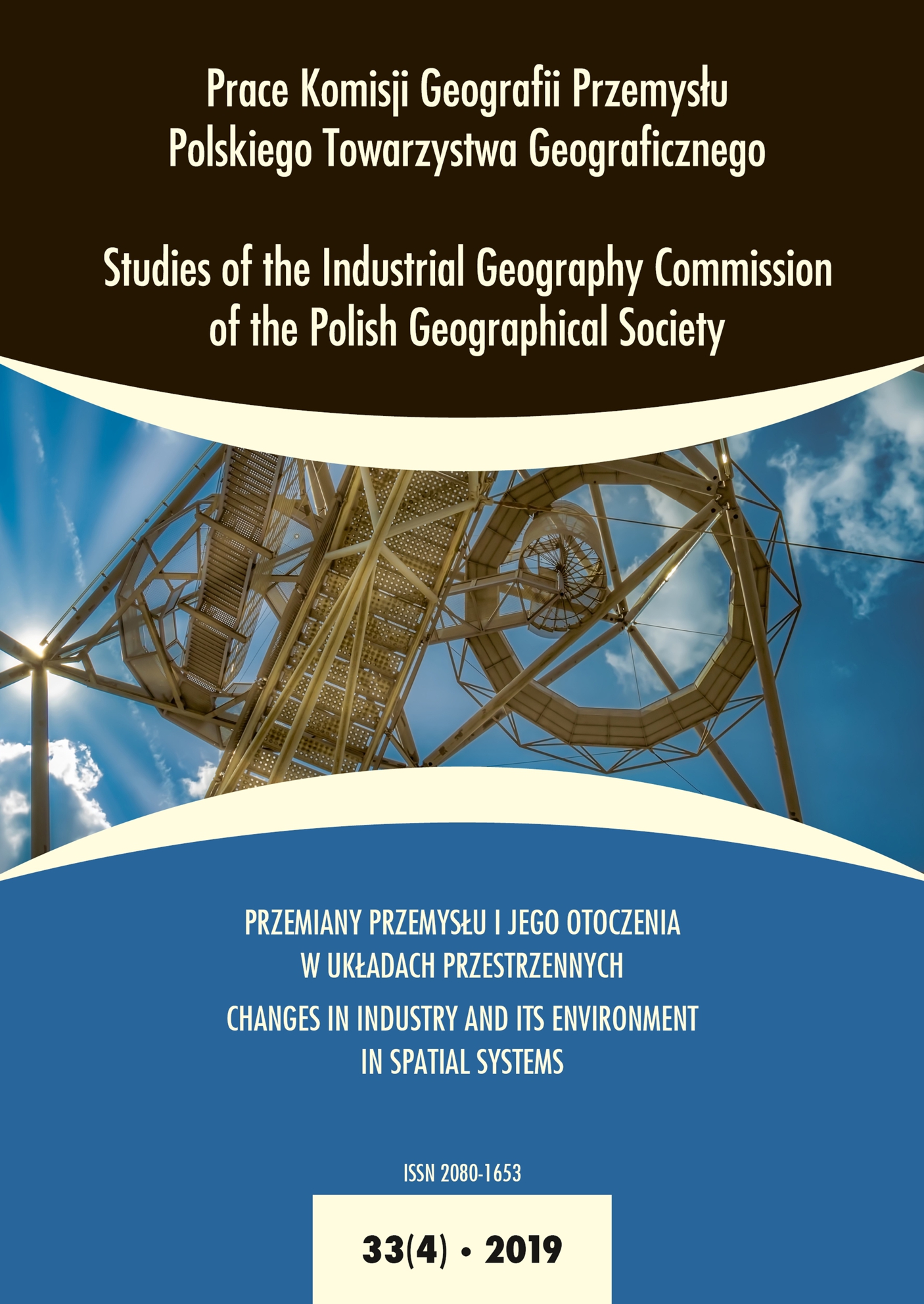Similarities in Employment Structure of the European Union Countries in the Years 2008–2017 – Assessment of Dynamics
DOI:
https://doi.org/10.24917/20801653.334.17Keywords:
employment, EU countries, European Union, structuresAbstract
The aim of the paper is to identify groups of European Union countries similar in terms of employment structures, applying the furthest neighbour agglomerative clustering procedure with dynamic approach.
The employment data for UE countries is reported in 10 sections: agriculture, industry, construction, trade, information, finance and insurance, real estate, professional services, administration, culture. A research presented covers the period of 2008-2017. Distance matrices for the dissimilarity of employment structures in EU countries have been calculated separately for each year. Then, the furthest neighbour method has been applied (which is next to Ward method in group identification efficiency) with the critical agglomerative distance of 0.15. It means that two groups can be merged if the furthest distance between objects belonging to different groups is not bigger than 0.15. Cutting dendrograms in this way we found that the resulting groups of countries for consecutive years are rather similar. Luxemburg and Romania formed a single-object groups in every year. Three main groups have been identified within other EU countries. Dynamics of these groups content, and average structures is discussed.
Downloads
Metrics
References
Acemoglu, D. (2002). Technical change, inequality, and the labor market. Journal of Economic Literature, 40(1), 7–72.
Castellano, R, Musella, G., Punzo, G. (2017). Structure of the labour market and wage inequality: evidence from European countries. Quality & Quantity: International Journal of Methodology, 51(5), 2191–2218.
Castellano, R, Musella, G., Punzo, G. (2019). Exploring changes in the employment structure and wage inequality in Western Europe using the unconditional quantile regression. Empirica, 46(2), 249–304.
Chomątowski, S., Sokołowski, A. (1978). Taksonomia struktur. Przegląd Statystyczny, 2, 217–226.
Eurostat (2018, 10 października). Pozyskano z http://appsso.eurostat.ec.europa.eu/nui/show.do?dataset=lfst_r_lfe2en2&lang=en
Fernández‑Macías, E. (2012). Job polarization in Europe? Changes in the employment structure and job quality, 1995–2007. Work and Occupations, 39(2), 157–182.
Gelbard, R., Goldman, O., Spiegler, I. (2007). Investigating diversity of clustering methods: An empirical comparison. Data & Knowledge Engineering, 63, 155–166.
Goos, M, Manning, A, Salomons, A. (2009). Job polarization in Europe. American Economic Review, 99, 58–63.
Grabiński, T. (1980). Wielowymiarowa analiza porównawcza w badaniach dynamiki zjawisk ekonomicznych. Zeszyty Naukowe Akademii Ekonomicznej w Krakowie, seria specjalna: Monografie, 61.
Markowska, M., Sokołowski, A., Strahl, D. (2014). Taksonomia dynamiki zmian struktury zatrudnienia w nowoczesnym przemyśle i usługach w regionach Unii Europejskiej. Prace Komisji Geografii Przemysłu Polskiego Towarzystwa Geograficznego, 26, 46–64.
Walesiak, M. (1982). Metoda oceny podobieństwa struktur (na przykładzie struktury gałęziowej zatrudnienia w przemyśle uspołecznionym województw Polski w roku 1980). Wiadomości Statystyczne, 10(256), 11–14.
Downloads
Published
How to Cite
Issue
Section
License
Articles are published under the terms of the Creative Commons License (CC BY-ND 4.0; Attribution– NoDerivs).

